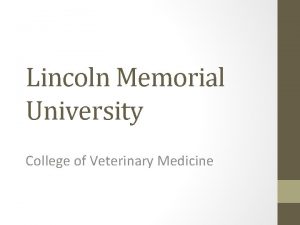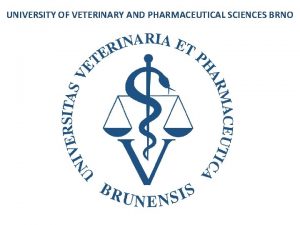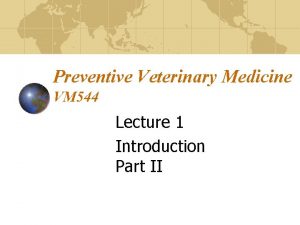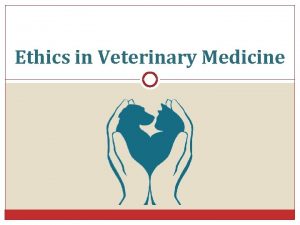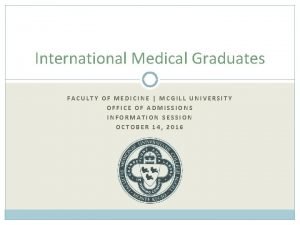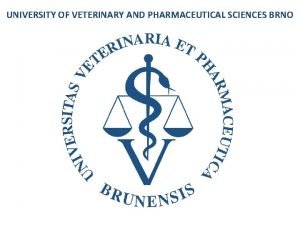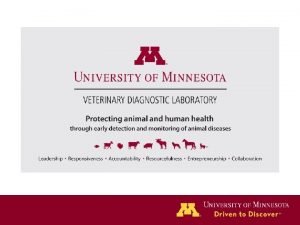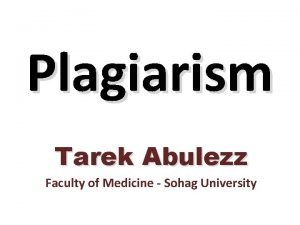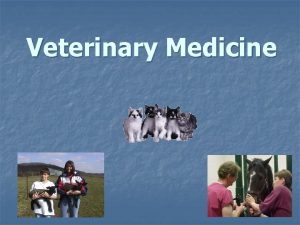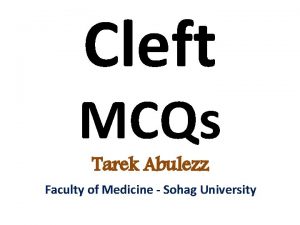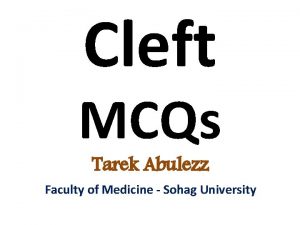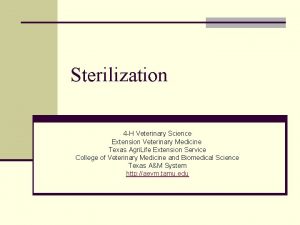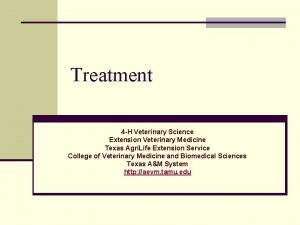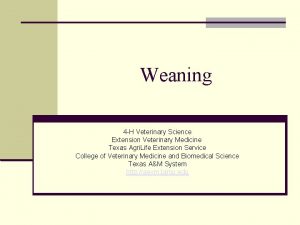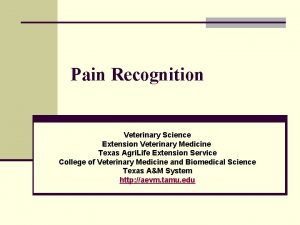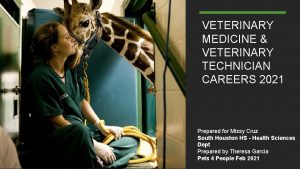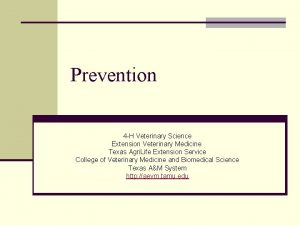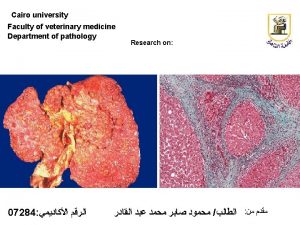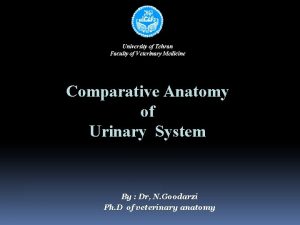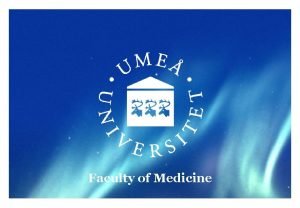Sohag University Faculty Of Veterinary Medicine Welcome to












![Trunk terminology Dorsal -- directed toward the back [head, trunk, tail]; also applied to Trunk terminology Dorsal -- directed toward the back [head, trunk, tail]; also applied to](https://slidetodoc.com/presentation_image/247b1feba37b0dc3aa33f10879a07884/image-13.jpg)











- Slides: 24

Sohag University Faculty Of Veterinary Medicine Welcome to Anatomy and Embryology Dep


Anatomy The branch of biological science Scientifically which deals with form and structure of organisms (animal). Literally It means cutting apart or cut and see

General Introduction § What is meant by Anatomy:

Simple Dissecting Instruments § Scalpel: § Forceps (Toothed & Un toothed):

Branches of Anatomy

Branches of Anatomy Gross Anatomy: Study of form and structure of different parts of the body with the unaided eye. Microscopic Anatomy: Study of various tissues and organs with the use of microscope. Special anatomy: Description of the structure of certain single animal species, e. g. Hippotomy (Horse. Anatomy).

Comparative Anatomy: Comparison of structures of different animals. Developmental Anatomy: Study of changes that occur to the organism from the time of conception through birth (Embryology) , youth, maturity and even to older age. Phylogony: Ancestral history of different animal species i. e. Historical development.

Methods of studying Anatomy 1. Systematic Anatomy: Study of the structure of different systems of the body. Osteology: Description of skeleton. Syndesmology: Desacription of joints. Myology: Description of muscles. Splancnology: Description of viscera. Angiology: Description of Vessels. Neurology: Description of nervous system. Sense organs: Eye and ear. Common integuments: Skin and associated structure.

2. Topographic Anatomy: Description of different regions of the body like limbs, head & neck, abdomen and thorax and pelvis. 3. Applied Anatomy: The use of anatomical facts in relation to applied sciences like surgery, internal medicine, theriogenology etc.


Topographic Terms Superficial and Deep (profundus) indicate relative distances from the surface of the body. External and Internal refer to relations of depth in organs and cavities. Medial and Lateral give the position near to, or farther from, the midline of the body.
![Trunk terminology Dorsal directed toward the back head trunk tail also applied to Trunk terminology Dorsal -- directed toward the back [head, trunk, tail]; also applied to](https://slidetodoc.com/presentation_image/247b1feba37b0dc3aa33f10879a07884/image-13.jpg)
Trunk terminology Dorsal -- directed toward the back [head, trunk, tail]; also applied to manus & pes. Ventral -- directed toward the belly [head, trunk, tail]. Cranial -- directed toward the cranium (brain case).

Head terminology Rostral(oral) directed toward the mouth. Caudal (aboral) directed in the opposite direction.

Limb terminology Proximal Distal Proximal is the direction toward the trunk. Distal is the direction away from the trunk. Dorsal is the direction toward the dorsum of the foot Palmar (manus) or Plantar (pes) are the directions toward the palm or plantum of the fore and hind foots respectively.



General Osteology The study of bones which make up the skeleton. The skeleton may be Endoskeleton embedded in soft tissues. 1. Axial skeleton: includes skull, vertebral column, ribs and sternum. 2. Appendicular skeleton: includes bones of the limbs. 3. Visceral skeleton: e. g. : Os cordis in heart of ox. Os penis in penis of dog. Exoskeleton

1. Long bones: Types of Bones They are elongated and cylindrical. consists of body, proximal extremity and distal extremity. They occur in limbs. 2. Short bones: Bones with nearly similar dimensions. e. g. Carpal and tarsal bones. 3. Flat bones: Thin and expanded in two directions. e. g. bones of the skull, scapula 4. Irregular bones: Bones that have irregular shape. e. g. Vertebrae

Bony Projections (Elevations) 1) Articular Projections: § Head. § Condyle. § Trochlea. § Facet.

Bony Projections (Elevations) 2) Non articular Projections: § Neck. § Epicondyle. § Process. § Trochanter. § Tuberosity. § Tubercle. § Line. § Crest. § Spine (Pointed or Ridge).

Bony Depressions 1) Articular Projections: § Glenoid cavity. § Cotyloid cavity. § Notch.

Bony Depressions 2) Non articular Projections: § § § § Notch. Fossa. Fovea. Groove = Sulcus. Sinus. Fissure. Foramen. Canal.

 Faculty of veterinary medicine cairo university logo
Faculty of veterinary medicine cairo university logo Auricle of heart vs atrium
Auricle of heart vs atrium Faculty of veterinary medicine cairo university
Faculty of veterinary medicine cairo university Cairo university faculty of veterinary medicine
Cairo university faculty of veterinary medicine Lincoln memorial university college of veterinary medicine
Lincoln memorial university college of veterinary medicine Veterinary and pharmaceutical university brno
Veterinary and pharmaceutical university brno Sohag saleh
Sohag saleh Hubert kairuki memorial university faculty of medicine
Hubert kairuki memorial university faculty of medicine Hyperparathyreosis
Hyperparathyreosis King abdulaziz university faculty of medicine
King abdulaziz university faculty of medicine Agnes csaki semmelweis
Agnes csaki semmelweis Hacettepe university faculty of medicine
Hacettepe university faculty of medicine Semmelweis university faculty of medicine
Semmelweis university faculty of medicine Vm 544
Vm 544 Ethics in veterinary medicine
Ethics in veterinary medicine Veterinary medicine
Veterinary medicine Faculty of medicine nursing and health sciences
Faculty of medicine nursing and health sciences Mcgill medicine supporting documents
Mcgill medicine supporting documents Pubh4401
Pubh4401 Emory dermatology clinic
Emory dermatology clinic Veterinary and pharmaceutical university brno
Veterinary and pharmaceutical university brno Mn vdl
Mn vdl Bihar veterinary university
Bihar veterinary university University of split faculty of maritime studies
University of split faculty of maritime studies Bridgeport engineering department
Bridgeport engineering department




